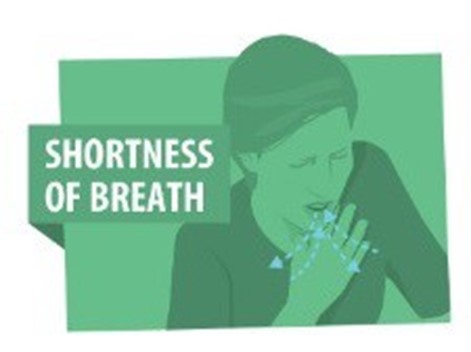Signs and symptoms of dyspnea include
Feeling short of breath
Decreased work of breathing
A failure to use accessory muscles
An improvement of symptoms with exercise
The Correct Answer is A

Dyspnea is a term used to describe difficulty breathing or shortness of breath. It is a subjective symptom and can be experienced differently by different people. Common signs and symptoms of dyspnea include feeling short of breath, chest tightness, rapid breathing, wheezing, coughing, and a feeling of suffocation. The work of breathing may be increased, and accessory muscles may be used to help with breathing. Exercise may worsen symptoms of dyspnea in some individuals, while in others, it may improve symptoms.
Nursing Test Bank
Naxlex Comprehensive Predictor Exams
Related Questions
Correct Answer is B
Explanation
IgE is the immunoglobulin associated with allergic reactions and is often elevated in patients with asthma. When a person with asthma is exposed to an allergen, their IgE levels increase, leading to the release of inflammatory chemicals such as histamine, which can cause bronchoconstriction and other symptoms of asthma.
IgA: This is an immunoglobulin that plays a role in the immune system's defense against infections. It is mainly found in the mucous membranes of the respiratory and gastrointestinal tracts.
IgG: This is the most abundant immunoglobulin in the bloodstream and plays a role in providing immunity against bacterial and viral infections. It can also cross the placenta and provide passive immunity to a developing fetus.
IgM: This is the first immunoglobulin produced in response to an infection and plays a role in the body's defense against bacterial and viral infections. It is found primarily in the bloodstream.
Correct Answer is B
Explanation
associated with chronic heart failure. Activation of the RAAS system occurs as a compensatory mechanism in response to decreased cardiac output and reduced renal perfusion. The renin-angiotensin-aldosterone system increases blood pressure, maintains blood volume and improves cardiac contractility in the short term, but in the long term it can lead to fluid retention, edema, and worsen cardiac function.
Whether you are a student looking to ace your exams or a practicing nurse seeking to enhance your expertise , our nursing education contents will empower you with the confidence and competence to make a difference in the lives of patients and become a respected leader in the healthcare field.
Visit Naxlex, invest in your future and unlock endless possibilities with our unparalleled nursing education contents today
Report Wrong Answer on the Current Question
Do you disagree with the answer? If yes, what is your expected answer? Explain.
Kindly be descriptive with the issue you are facing.
